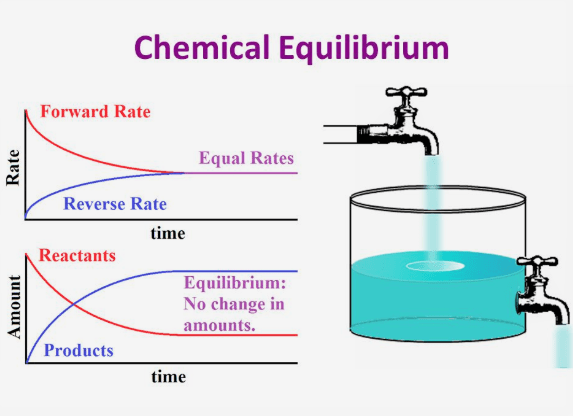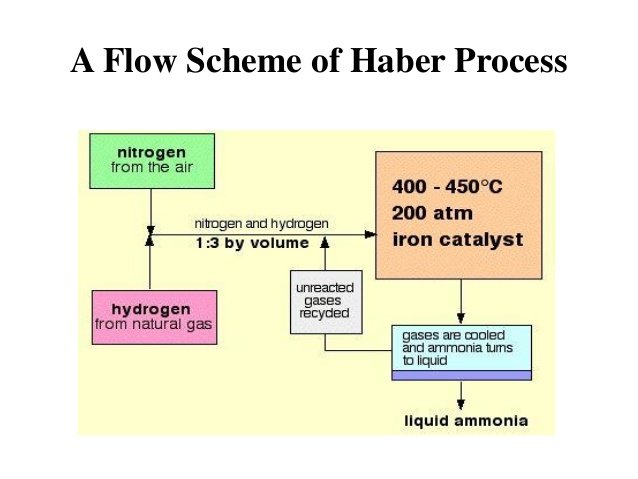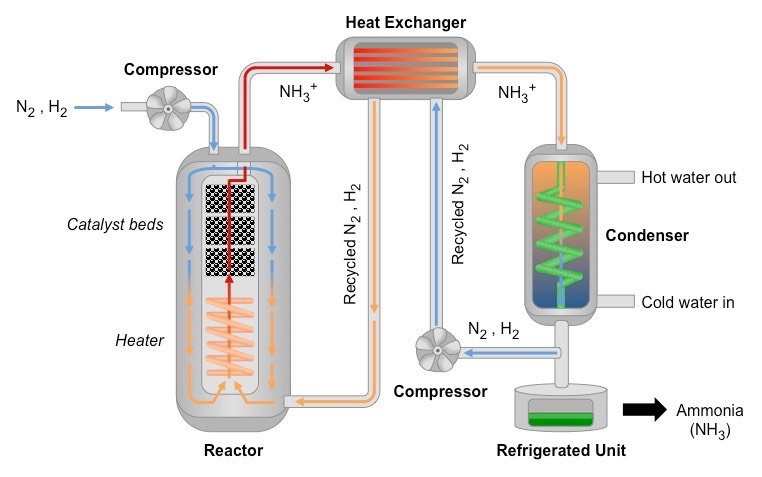Back to: CHEMISTRY SS2
Welcome to Class !!
We are eager to have you join us !!
In today’s Chemistry class, We will be learning about Chemical Equilibrium. We hope you enjoy the class!
CONTENT
- Reversible Reactions
- Le Chatelier’s Principle
- Factors Affecting Chemical Equilibrium
- Equilibrium Constant

EQUILIBRIUM
Equilibrium can be defined as the state of a system where there is no observable or detectable change in the properties of the system with respect to time. Examples of a system in equilibrium
- a balanced seesaw
- a saturated solution of NaCl
STATIC AND DYNAMIC EQUILIBRIUM
Static equilibrium is attained when a system in equilibrium is in a state of rest or stationary state.
Example of this is a balanced seesaw
Dynamic equilibrium can occur during a physical change or a chemical change that is reversible. Dynamic equilibrium involving a physical change is referred to as physical equilibrium while that involving a chemical change is a chemical equilibrium.
A system is said to be in a state of dynamic equilibrium when both the forward and backward reactions take place at the same rate. Example
N2O4(g) 2NO2(g)
EQUILIBRIUM IN REVERSIBLE REACTION
A reversible reaction is one which proceeds in both forward and backward directions under suitable conditions.
For example: NH4Cl(s) NH3(g) + HCl(g)
A reversible reaction is said to be in dynamic equilibrium when both the forward and backward reaction is occurring at the same rate, thereby producing no net change in concentrations of the reactants or products.
Properties of a system in equilibrium
- A chemical reaction at equilibrium is in a dynamic state when the rates of the forward and backward reactions are equal.
- The equilibrium position can be reached from reactants alone or form product alone
- For equilibrium to be established, the system must be closed
FACTORS AFFECTING THE POSITION OF EQUILIBRIUM
The position of equilibrium depends on the following set of condition
- Temperature
- Concentration
- Pressure (for gases)
Variation in any of these factors will upset the balance of the system and results in a shift in the position of the equilibrium. These factors and their effect on chemical systems in equilibrium were studied by Le Chatelier’s who formed the Le Chatelier’s principle.
Le Chatelier’s principle states that if a chemical system is in equilibrium and one of the factors involved in the equilibrium is altered, the equilibrium position will shift so as to neutralize the effect of the change.
Importance of Le Chatelier’s principle in the chemical industry: It helps to
- Define optimum conditions for chemical process
- Reduce undesirable reversibility
- Predict the effect of altered factors on the equilibrium
EFFECT OF TEMPERATURE
For an endothermic reaction, increase in temperature shifts the position of equilibrium to the right. That is, the forward reaction is favoured while a decrease in temperature favours the backward reaction. The reverse is the case for exothermic reactions.
EFFECT OF CONCENTRATION
In a system of equilibrium, if the concentration of reactants is increased or product decreased, the forward reaction will be favoured, that is; equilibrium position shifts to the right. Also, if the concentration of the products is increased or reactant decreased, the backward reaction will be favoured, equilibrium position shifts to the left.
EFFECT OF PRESSURE
The pressure of a gas is proportional to the number of moles. Increase in the number of moles implies an increase in pressure and vice visa. If the forward reaction proceeds by decreases in the number of moles (pressure), an imposed increase pressure will favour forward reaction. The reverse is the case if it proceeds by an increase in the number of moles (pressure). In other words, when high pressure is applied, equilibrium will shift to the side with less number of moles while when low pressure is applied, equilibrium will shift to the side with the greater number of moles.
N2(g) + 3H2(g) 2NH3(g)
1 mole 3 moles 2 moles
Increase in pressure favours forward reaction while a decrease in pressure favours backward reaction
EFFECT OF CATALYST
A catalyst does not change (affect) the position of equilibrium. Addition of catalyst, however, increases the rate of both forward and backward reaction by lowering the activation of the energy of the reaction.
The equilibrium position is attained at a faster rate when a catalyst is present.
EVALUATION
- State Le Chatelier’s principle
- Explain the effect of
- Increase in temperature
- decrease in pressure
on the following reaction
2SO2(g) + O2(g) 2SO3(g) H = -3957KJmol-1
HABER PROCESS
Haber process is an industrial process for the manufacture of ammonia.
Ammonia, NH3, is an important chemical for the manufacture of fertilizers. During the process, the following equilibrium is established
N2(g) + 3H2(g) 2NH3(g) H = -96KJmol-1
1 mole 3 moles 2 moles


CHOICE OF TEMPERATURE
Since the forward reaction is exothermic, Le Chatelier’s principle shows that the greatest yield of ammonia, NH3, would be obtained at low temperature. However, if the temperature is too low, the time taken to reach equilibrium would be much. A temperature of 5000C gives a reasonable yield of ammonia.
CHOICE OF PRESSURE
Since forward reaction leads to a decrease in the number of moles (pressure), Le Chatelier’s principle shows that high yield of ammonia would be obtained at high pressure. The pressure of 25atm gives a satisfactory yield.
CHOICE OF CATALYST
Iron is used as a catalyst in the Haber process. Iron is found to be effective in speeding up the rate of which equilibrium is reached. It is used in the form of small pellets which increased the surface area available for contact.
EQUILIBRIUM CONSTANT (K) AND LAW OF MASS ACTION
The law of mass action states that at a constant temperature, the rate of reaction is proportional to the active masses of each of the reactants;
The active mass of the reactants is the concentration of the substance raised to the power of coefficient (number of moles) of that substance in the equation of reaction under study.
NOTE: Active mass = molar concentration x activity coefficient
In most reactions, the active masses of the reactant may be taken as their molar concentrations.
Example:
aA + bB products
Thus, r α [A]a and r α [B]b
where [ ] represents concentration in moldm-3
r α [A]a x [B]b
r = k [A]a [B]b
where k is called equilibrium constants
Applying the law to the reversible reaction represented by the equation below:
aA(aq) + bB(aq) cC(aq) + dD(aq)
Kc= [C]c [D]d
[A]a [B]b
Where Kc is called equilibrium constant
For reactions involving gases, the equilibrium constant is expressed in terms of the partial pressures of the gases involved in the reaction.
Therefore, for the general gaseous reaction:
aA(g) + bB(g) cC(g) + dD(g)
Where Kp is the equilibrium constant for the gaseous reaction, PA, PB, PC and PD are partial pressures of gases A, B, C and D respectively.
NOTE: For a given reaction, concentrations of solids are ignored. A Kc or Kp value greater than one tells you that product formation is favoured at equilibrium; while a Kc or Kp value less than one tells you that reactants formation is favoured at equilibrium. A system in equilibrium has Kc or Kp value equal to one.
GENERAL EVALUATION/REVISION
- State the conditions for the optimum yield of ammonia in the Haber process.
- State Le Chatelier’s principle
- Define the following terms and state how they vary across a period and down a group: Ionization energy, Electronegativity, Electron affinity
- Define oxidation, reduction, oxidizing agent and reducing agent in terms of electron transfer
- An organic compound contains the following by mass: 0.188g of C, 0.062g of H and 0.25g of O. If the vapour density of the compound is 16, determine its molecular formula.
READING ASSIGNMENT
New School Chemistry for Senior Secondary School by O.Y. Ababio (6th edition) Pages 265-275
WEEKEND ASSIGNMENT
SECTION A: Write the correct option ONLY.
- When the concentration of both reactants and product are equal
A. K = 1 B. K > 1 C. K ≥1 D. K = 0
2. In the reaction
2SO2(g) + O2(g) 2SO3(g) H = -xkJ/mole
increase in temperature favours the A. backward reaction B. forward reaction C. yield of SO3
3. How is the equilibrium constant for the forward reaction (Kf) related to that of the reverse reaction (Kr)?
A. Kr is the additive inverse of Kf B. Kr is the multiplicative inverse of Kf C. Kr is same as Kf D. The product of Kr and Kf is zero
4. The equilibrium constant expression involves A. solid, liquid and gaseous species B. gaseous species only C. species in aqueous solution only D. species in aqueous solution and gases only
5. Increase in pressure favours the forward reaction for an equilibrium reaction that proceeds with A. increase in pressure B. decrease in the number of moles C. no change in pressure D. increase in the number of moles
SECTION B
- State Le Chatelier’s principle
- Calculate (a) the equilibrium constant (Kp) for the reaction below at 45oC
(b) the equilibrium constant for the backward reaction below:
H2(g) + I2(g) 2HI(g)
3. Given that the partial pressure for H2, I2 and HI are 0.065atm, 0.45atm and 0.245atm respectively. From your answer, deduce which of the reaction is favoured.
We have come to the end of this class. We do hope you enjoyed the class?
Should you have any further question, feel free to ask in the comment section below and trust us to respond as soon as possible.
In our next class, we will be learning about Oxygen and its Compounds. We are very much eager to meet you there.

Thanks
Nice
this is the best of the best
this is unbelievable
Thanks